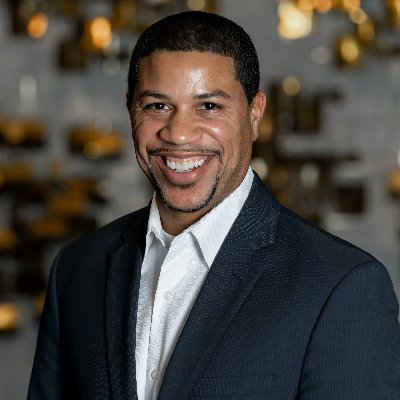Nick Smarrelli is in the thick of the digital world. He’s the CEO of Gadellnet and is constantly helping companies upgrade and build the tools they need to handle their work better.
But just because a company turns digital, doesn’t make them better.
Productivity in the digital workplace
We started the conversation talking about productivity in a digital workplace. Nick says productivity needs to be linked to success, not to tasks. “If you’ve defined what success looks like, then it doesn’t matter where you work or what hours you put in.”
The standard workweek and workday is going away and doesn’t fit the digital workplace. We need to be more results oriented. This shift in response to the pandemic has made us wake up to redefining those results and look at behaviors you know are successful.
Nick recommends using objectives to manage teams and breaking down goals into micro-behaviors. Gadellnet uses 15five for their objective management, and TINYpulse for daily performance management.
Clear objectives are the key to a good workplace. “Ambiguity provides stress and stress is a limiter for work,” says Nick. Clarity, on the other hand, creates confidence.
Do you understand the goals? Are they reasonable? Do you know how to get there? If you can answer all these, the work takes care of itself.
Who’s sailing and who’s sinking?
Nick said that the companies that are riding on top of the waves right now are those that
- have a high-impact culture
- have made smart investments in technology along the way
- know how to use data intelligence to understand where they are effective
If any of those are missing, companies are struggling. Nick said that those companies that are struggling are looking for technology to help them track employees throughout the work day or enable more micromanagement. They’ve already missed out on building trust.
What are humans going to be doing?
As we move further into the digital workplace, Nick thinks humans are going to spend their efforts solving more complex problems. Topics like change management will be the next big focus for humans to get really good at.
Nick sees the digital workplace as a chance to elevate what the human brain spends its time doing. Both data and people are important, but we need to give different jobs to humans and machines.
More from Nick Smarrelli
Check out Gadellnet.com to learn about his company.
ZeroExcuses – Nick’s podcast on how do strong successful people achieve amazing outcomes.
Today we have a very special guest. We have Nick Smarrelli. He’s the CEO of GadellNet Consulting Services. Hi, Nick. How are you doing today?
Hey, good morning. How are you?
Very good. I’m excited to talk to you. You have a lot of experience around the technical world. Why don’t you give us a little bit of background about your company and the type of clients you serve?
Absolutely. So I am Nick Smarrelli, CEO of GadellNet. We are an outsourced IT consulting company focused almost exclusively on the SMB space. So how do we define that? Within our world, it’s anywhere from about 25 employees up to about 500 give or take. So anything within that constraint lives in the space that we take care of. If you distill it down a little bit more from a profile perspective, and as I speak to a lot of the topics today will be coming from best practices from these industries, a lot of professional services organizations, accounting CPAs, construction organizations, those that really quantify the value of their time and/or see a lot of value in technology really helps provide a good construct for the type of client that we work with best.
Yeah, I think it’s important. I want people to know the breadth of clients you work with, because it’s going to impact our conversation here. We’re going to be talking about productivity in a digital workplace. We’re recording this in late May of 2020. So we’re deep into the Coronavirus pandemic. A lot of companies are making that transition to remote work, but I think productivity is on the minds, maybe not the first couple weeks, everyone’s just adjusting and keep the ship afloat. But now we’re seeing that this is going to be a longer term thing than most people realized at the start. So I want to start off just asking you, how would you have defined productivity maybe six months ago versus right now? And is there any difference for you in that?
I think there’s definitely some inherent differences. I think the foundation and as I was prepping what I wanted to touch on today ahead of this podcast, and I think the reality is it goes back to, I would say, fundamentals of really good leadership. And that I don’t think is necessarily changed. I would say there’s nuance to how work gets done that has changed significantly over the last 8 to 10 weeks. But the reality is, from a foundational perspective, not a lot has changed in the world of, I would say, finding productive employees. And I think the reality is one of the, I’d say, the most basic questions that we as a leadership team talk about, almost to the point of probably frustration for them is it’s Friday afternoon. They’re about to head into the weekend with their family. Have they defined what success looks like? Do employees know what success looks like? Because at the end of the day, I mean, the reality is, I don’t care where you’re working, if you understand what success looks like, and you choose to work in 30-minute blocks with 30 minutes with your family or you’re working six-hour blocks or you can get your work done in four hours or it takes you 20 hours because you’re not that effective. So at the end of the day, it’s defining that. I think there’s certainly, obviously, much more specifics to that. I’m sure we’ll get into that in the conversation today. But I would say foundationally, regardless of whether you’re looking at employees, and you have the ability which to walk behind their desk and see, does it look like it’s a productive thing or are they surfing Facebook, I think if you take two steps back for what truly is a good leader, and truly is a good employee that you want to keep in your company, regardless of location is do they understand goals, and are they doing all that they can to achieve them. I think everything in between is nuanced to the type of leader that I think you are.
Let’s talk about some of your customers and clients as you work with them. Give me a spectrum of some of the more progressive ways people are using technology to look at the idea of productivity and more the least progressive ways, I guess. What’s the spectrum look like?
I come back to that foundation of understanding success. So I’d say, again, looking at the strong clients, those that I think really took this virus and have really done, what I would say is the easiest pivots to this remote work world and they have a lot of unique characteristics. I say the first one is, again, a really strong company culture. And I would say that that’s easy. And company culture, I don’t necessarily talk about ping pong tables, and I love my team, but this reality of a high impact. My job is to impact in some capacity, the clients that they work with, or the business model that they serve, or if depending on the type of organization the bottom line, depending on how financially strong the employee base is. I would say that’s probably the number one characteristic. I’d say number two is a high investment in smart and good technology. It’s the, hey, I’m willing to spend and buy you extra monitors. So when you work from home, you can work from home effectively. You have a good system that does work. I had to make a few tweaks to our back end infrastructure in order for you to access applications quickly. They were willing to say, yes, there’s a ton of ambiguity ahead, but I’m still going to invest my employees and I think employees see that as a recognition of my employer is continuing to fund the resources for me to do my job. In turn, I have the obligation which is to work hard. And I would take three is folks that use in some capacity, and again, I’ll call it BI. So in non nerd world, it’d be business intelligence or data and analytics, to provide, I would say, easy access to general perform. Depending on the organization, and again, going back to the first point of company culture, it’s whether it’s individual contributions to the bigger picture or taking a few steps back and more team contributions to the bigger picture. Again, depends on people’s leadership styles, but really painting a really good picture of where are we ineffective? Where do we need new tools? Where do we need new resources? Again, what does success look like? So I would say those are some of the three easiest characteristics that really stand out as far as those organizations that I would say are perhaps not thriving. I don’t think anyone necessarily is thriving or certain most markets are not necessarily thriving. But I would say continuing to be successful, continuing to invest. I think now that we’re slightly emerging from our deep quarantine are really in a position to be aggressive and be on the offense once again, and I think that those folks are doing that. So the answer your flip side, I would say again, there’s obviously the opposite of everything I said, poor company culture, poor investments, and not enough realization of where your data is. But I think those individuals that have created new rules, so this is more of a cultural piece, you must be at your desk, I must see you green. We’re going to be doing a daily stand up at this time, which is inconvenient to have parents on the call or anybody who has a unique schedule. We’ve had even a few companies ask for a keyboard tracking, or I want the ability to which to track people’s emails, and are they actually checking emails throughout the course of the day. I found companies that slipped into this more of a micromanagement mentality. They are not coming out as easily and I think the core foundations of their business model are the ones that will stress them out now that they’re emerging from it. And I think this idea of building trust with their team has been missed. I truly believe, again, there’s I would say there’s not a lot of good that came out of this and nor do I want anyone to perceive that I see this as opportunistic. But this is truly a good opportunity to really build a lot of trust with your team. And show, again, I would say you can make all these claims in good times, but in bad, I would say that this is your time to shine and you are gifted as a leader, this opportunity to either falter or to thrive. And I think, again, to your question, I think those that are thriving through I would say strategic smart investment and not throwing money away are the ones that are going to get out of this really well.
I like what you’re talking about in terms of like, this is the time to show really what’s at the core, like what are you thinking about. What means success to you? So let’s come back to that. You said productivity is based on how you define success. So when you look at both spectrums of like this surveillance management, where you’re tracking keystrokes and different things, and another side, which is pretty much more hands off and say, hey, go after success, like, what do you think is at the heart of those differences? Is it that, at the beginning, people are thinking of productivity is like if you’re working on a computer, you’re being productive, versus if you’re doing what are you being productive? Where are we moving towards?
I think so and I think you nailed it with the definition of productivity as you’re sitting and getting work done. And so I say this jokingly, but my wife and I were just talking about that at breakfast this morning. So I’m going to bring up the story is, we do foster care. And one of the words that she used to describe me was efficient, and I thought it was the least romantic word that she could possibly do. But it really lends itself to this conversation in terms of, again, efficiency varies between people and the judgment call on what’s capable of getting in an eight hour day. I’d say, again, I think we’re moving away from that. I think we always had and I think the millennials for whatever people think about them, obviously, I have a much more positive view of them considering 90% of my organization is in that subset. But I think this has been happening already. Much like digital transformation, just like remote productivity, just like remote work, just like moving to the cloud, this has all been happening already. Coronavirus just smacked the rest of us into place and said, hey, you got to catch up. And I think the reality is the normal quote eight hour day is going away and going to this more results oriented culture, but I want to make sure I give a good caveat here and touch about it. I touch about it in my sales team, but it goes back to everything is obviously we are affected by the virus itself, our sales are down 20%, 25%, which again, and this from a perspective perspective makes us in the “blessed” community in terms of, we’re still we’re still okay. And so looking at a sales team where I know, businesses are not investing as much. I’m not firing my sales team because they’re down 25%. So we flipped a little bit of the script here and when we talk about results oriented, we looked at for them it’s more behavior management. So we know you’re probably not going to hit the quotas that it takes to hit these bonus milestones or even what I would say profitability milestones, but we really flipped it to more, hey, these are the behaviors that we expect during this time. And so, for our sales team, it’s engaging in webinars or podcasts, it’s you’re having three new conversations, you’re building a new pipeline of referral partners. And so rather than what the normal definition of 5pm and Friday success, which was I landed a new account, it’s more I’m providing these foundational behaviors because I know once we get out of that, that’s going to help build us here. So I would say the big caveat to my first comment is, sometimes you may have to redefine what results look like in this new culture while people are working from home, while the factors have changed, but ultimately speaking, it comes down to the thing of creating clarity and get it done when you can.
Have you as an organization engaged much in objectives, key results, key performance indicators? Has that impacted how you look at what it means for someone either in sales? Or who’s a developer, who’s doing marketing to be productive?
No question. And yes, we’re huge advocates for it. So I’ll do a quick referral for a software that we use, because it helps provide context for what we do. So we use a software called 15Five. You familiar?
Yes, go ahead.
So, big fan of the software and what it does and the name of it gives it away. It does objective management. It takes 15 minutes a week and 5 minutes for the manager to review it. That’s where the name comes from. I think the reality is, I would call the product 3One. It’s a little bit quicker than that. But what it does and the foundation of the organization’s goal structure is we have two-year goals. We have one-year goals. We have one-year goals that translate to 90-day goals, 90-day goals to translate into weekly goals. And so we manage weekly goals through that system. And we limit it to three. And we say what are your top three priorities for the week. This specifically affects a lot of times our management layer, and our more administrative layer. A lot of times anybody who’s doing the development work or engineering work, they have much more tactical type goals. They’ve gotten X number of tickets to close. That’s a lot easier to track, obviously, than it is more administrative process improvements, continuous improvement, those type of things. But they’ve got three goals that they have to do. And then we’ve got behavioral based management type items. So, for our account management team, they meet with our clients and we’ve got to do X number of quarterly business reviews per week because we know that that is a great way to understand our clients needs, making sure that they understand that we understand what they’re going through, and then obviously, create new sales opportunities. So we do a little bit of behavior management through that system, but the reality is it breaks down, again, these big, complex future thinking goals into weekly goals. But we do use that process on a regular basis. So you create your goals on the Friday and then the next Friday, you reflect upon the three goals, and then create three new ones. And we do report out on, again, our success and hitting each of those respective three goals. So every week we’re looking at it and saying, alright, we’re 8% plus to completing our top three goals per person, or we’re 60% plus. And for me, as a leader, I analyze and say what factors outside of our control affected that. Is this a management issue? Is this a leadership issue? Are we setting too fast of goals? So we really use that process as a micro level step. And I appreciate that and I get to see everybody’s goals, too. So it’s not micromanaging, I don’t think. I don’t overstep, but for me, it creates some clarity around what everyone’s working on and making sure we’re all marching to the same vision.
You guys are deep into technology. You know what’s possible to create for companies right now. I’m going to talk about the difference between human productivity and, we’ll say, algorithm machine productivity that’s out there. So as we get farther into the future, it’s reasonable to assume that machines, robots, algorithms will take on more tasks that humans are doing now. As that split continues to form, where do you feel like humans need to go in terms of what we consider work? Like you said, success, oftentimes, I think productivity is just like, how do you know you did a good job today? So how do you feel like, as technology continues to advance, as machines are able to do more and more things, what are going to be the things that’s really silo into what human productivity means? In terms of, hey, this human did a good job today, we’re proud of them because they did what? What does that mean for you?
Again, I use the word nuance a lot. A top five goal for the organization is this idea of creating automation and efficiency. And it’s nailing to your point in terms of, again, that’s not only just create a better process, it’s how do we integrate technology to offload some of the more foundational things and more administrative tasks, or I talk about BI in the sense of the controller, this definition of success for controller is no longer I created a P&L statement or I created these reports, and I sent it to the sales leader or the whomever leader. And so we go back to the concept of nuance. And I think, what I don’t anticipate it’s certainly not in the next foreseeable future, in the next, I would say, 5 to 15 years, is the ability with the human brain to understand both the human element and then I would say, nuance of what does this data mean, and how do I properly apply it. I think, as things go on, we’re going to automate and eliminate basic manual tasks. And thus I think the responsibility of us as business leaders is to provide training and resources for people to elevate their game outside of, again, in our worlds we’ll touch on password resets or setting up a computer or some of those things and saying now my job is to solve more complex issues of Neil has an organization and Neil’s organization is suffering through these key things. How do we integrate and bring technology into that? Right now there is no AI that does that in a way that a human brain can do. Change management, I think is going to be a key thing that we’re going to see more and more where skill sets, I think, truly from a growth and development perspective, are lacking in terms of how do you identify change, how do you find root cause, but more importantly, how do you bring on and enable change and encourage others to participate in that change? And I think that’s a skill set that that more and more people need and will probably not be automated out. So I would say, just again, going back to the concept of nuances is taking some of that data feeds, getting rid of some of those manual tasks. And then navigating some of that is a skill set that we’re continuing to look into how do we train and develop, but I think it’s going to be a missing gap in the next few years from the general employee base. I’m excited about it. I love the idea of getting rid of some the more basic tasks and really elevating where I think the human brain is capable of producing.
When you think of things like change management, of things like how do you define success in that world, we’re a long way off from developing a machine that’s able to hold those tasks in mind and really achieve great results from that. So I think that’s a great thing to think about as we look forward to different things. Nick, when you’re talking to other leaders out there who are building digital workplaces, as you’re giving them advice, when the word productivity comes up, you’ve given us a lot of things to think through in terms of what to avoid and what to move forward. But what’s maybe just one small step as people are trying to redefine that word in their own minds. How would you recommend them to move forward in their understanding?
So, again, I consider myself, we use the predictive index. So I’m a high B, which means the human element and the emotional element is the thing that comes most naturally to me. And then second to that is data. But I come a lot back to the conversation about I always, in my world, and I think is incredibly important for all business leaders is to start with the data as a starting point, then obviously integrate the people side of things to it. So for me is, if you are looking to say, again, going back to that foundational question, do my people understand what I’m doing is we use another piece of software, go figure. It’s an anonymous survey software, it’s called Tiny Pulse. There’s a lot of great ones out there. Amplify is a local company that does a very similar thing. But what I like about Tiny Pulse is it allows me to nimbly ask questions when I need it. So one of the questions I would start with in terms of understanding that and anonymity provides you obviously with a very unbiased view and a little more global view of the organization. We have 110 people. I can’t walk into a room anymore and ask people how they’re doing or what they think about this. So if you have a smaller organization, this doesn’t necessarily apply. If you have a bigger one, it helps. But ask the question, do I understand what success looks like to me at the end of the week? Touch on performance management. Do I think our performance management process is fair, because I think that provides context into do I believe I’m analyzed on what my job looks like? So ask questions and get data and see what your team is clamoring for. And I think one of the weirdest psychological things is, again, we hold our teams to a fairly high standard in terms of what they’re capable of producing. And I think, for me, ambiguity provides stress and stress is a huge limiter in productivity. I would say it’s probably the biggest limiter and I would like to say it’s technology, but I think it’s stress or ambiguity creates an unproductive workforce. And I think providing clarity, we use another phrase internally, clarity creates confidence, is providing clarity of what success looks like, I think create a higher performing organization not only for the fact that they’re hitting goals, but I think it minimizes that stress. So understand where there’s a lack of clarity, and then dive deeper into each of those. So identify, is there an issue with understanding what my goals are? Do they believe our goals are unreasonable? Are they too easy? Are they too hard? Again, look at the goals and say, who is hitting them and who is not? Because ultimately speaking, goals are much like any of your values if you don’t enforce them, then they’re worthless is if you have goals that people aren’t hitting or 80% of the organization is not hitting, then they’re seen as not really goals, and they’re just seen as funny numbers on the wall that are meaningless. Am I willing to make the hard decisions on employees that are not hitting those goals? And if not, then you maybe have the wrong goals. So again, I would look at, for those of you play that basketball or whatever, this is the layups. These are not really hard things to do, but I feel like people skip to the most complex things in business, rather than, again, look at it is there clarity? What are our goals? What are the success rate of those goals and maybe perhaps redefine those? It sounds so basic and easy. But I do believe it provides a really strong foundation into moving forward and creating accountability across the organization.
Yeah, I like the idea of oftentimes we skip those basics. We don’t understand like the root of the problem we’re actually trying to solve, and especially the point you made about removing stress. Stress is a huge enemy I feel like of a digital workplace, of a future workplace. Anything we can do systemically as leaders to remove stress from people’s lives is a great thing. And to your point, the idea of ambiguity is a huge stress of ending that week on Friday, not being sure if you did a good job or not. I think we need to make sure to encourage people to make sure that they know what that means to do a good job, to do good work, to be successful. And also to your point, like you said, software can enable you either side. It can do the micromanaging. It can do the surveillance but it can also do a great job of scaling those, how are you doing conversations and really provide that clarity. So I love those points. Good. Well, Nick, it’s been fun to chat with you, learn more about your perspective on things. Where can people go if they want to learn more about you, your services, those kinds of things?
Absolutely. I think a good starting point in terms of hearing some of my musings. I’ve got a LinkedIn page. I actually run a podcast as well. It’s called Zero Excuses. So you can look that up. And then just gandellnet.com is our website. So happy to have you guys visit there as well. Again, we have a digital transformation team that help guide clients through some of these things. So happy to continue to have those conversations around both technology, but how that plays into culture.
What do you cover on your podcast just to promote it for people?
So the podcast is one of our core values, we have three core values. One of those values are 0% excuses. And what it is it’s an accountability platform that we use for people honoring their promises. For us, the basic pretense of the show is bringing on business leaders that can blend, I am a CEO of an organization, I am a spouse, I am a parent, I have achieved some sort of athletic pursuit or hobby pursued or I’m giving back to the community in a way that is unique in the sense that for me one of the biggest pet peeves of mine is where people say, well, I’d love to work out more, but I just don’t have the time or I would love to do this, but I don’t have X and this idea of how do strong successful people balance, how do they say yes, how do they say no to things in order to achieve pretty amazing, amazing outcomes. And so the purpose is to eliminate those excuses, maybe perhaps share best practices about habits, and for lack of sounding less cheesy, is to live your best life.
Well, cool. Nick, it’s been fun to chat. We look forward to stay in touch with you and we’ll talk again soon.
Thanks for having me on, Neil. I appreciate it.
Nick Smarrelli is the Owner and Chief Executive Officer of GadellNet Technology Solutions with offices in St. Louis and Indianapolis. GadellNet is a 6-time Inc. 5000 fastest-growing company, 3-Time “Best Places to Work” and a CRN Top 50 Managed IT Services company with nearly 85 employees in the Midwest. GadellNet provides managed IT services, cyber security consulting and infrastructure support for small and medium sized businesses.
The IT Industry in the Midwest has a 40% turnover rate, but GadellNet proudly boasted an 8% turnover rate (both voluntary and involuntary) across both its offices in 2017 and 2018. The key to their cultural success was the formulation of a very clear set of values that serve as the backbone for nearly every management decision – recruiting, interviewing, performance management. communication, strategic prioritization and compensation.
These values have become more than just words on a wall, but a way of thinking and acting in the company – allowing for individual contributions and diversity of ideas – but, inspired by a common ethos.
Nick has a degree in Psychology and a degree in Finance from St. Louis University. He ran National Account sales for Ingersoll Rand before realizing his passion for entrepreneurship in 2010. Nick is an Ironman athlete, ultramarathon runner, father, and has been a featured technology and business speaker for chambers of commerce, large national associations, national non-profits, and numerous industry technology conventions.












